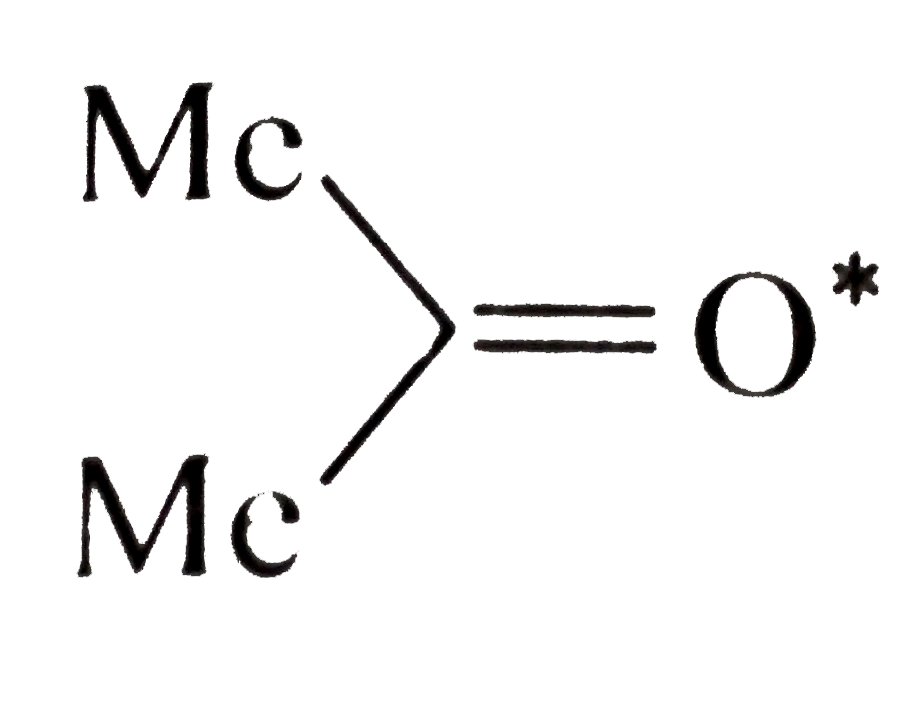Aldehydes usually donot form stable hydrates but chloral normally exists as chloral hydrate. Explain.
Step-by-Step Solution:
1. Understanding Aldehyde Hydration:
Aldehydes generally do not form stable hydrates because when they react with water, they form a hemiacetal. The reaction is reversible, and the equilibrium tends to favor the reactants (the aldehyde and water) rather than the product (the hydrate). This is due to the instability of the hemiacetal formed.
2. Equilibrium Shift:
In the case of a typical aldehyde, the reaction can be represented as:
RCHO+H2O⇌RCH(OH)2
Here, RCH(OH)2 is the hydrate. However, the presence of only one hydroxyl group (OH) on the carbon atom makes the product less stable, leading to a shift in equilibrium back towards the aldehyde.
3. Chloral Structure:
Chloral, or trichloroacetaldehyde (CCl3CHO), is an exception. When chloral reacts with water, it forms chloral hydrate:
CCl3CHO+H2O→CCl3CH(OH)2
The chloral molecule has three chlorine atoms attached to the carbon atom adjacent to the carbonyl group, which influences the stability of the hydrate.
4. Stability of Chloral Hydrate:
The chloral hydrate is stabilized by the formation of hydrogen bonds. The presence of multiple electronegative chlorine atoms increases the polarity of the carbonyl group, making it more reactive towards water. Additionally, the resulting chloral hydrate can form a stable cyclic structure (a five-membered ring) due to intramolecular hydrogen bonding, which contributes to its stability.
5. Conclusion:
Thus, while typical aldehydes do not form stable hydrates due to the unfavorable equilibrium and instability of the hemiacetal, chloral forms a stable hydrate due to the presence of electronegative chlorine atoms and the ability to form stable hydrogen bonds and cyclic structures.
Aldehydes generally do not form stable hydrates because when they react with water, they form a hemiacetal. The reaction is reversible, and the equilibrium tends to favor the reactants (the aldehyde and water) rather than the product (the hydrate). This is due to the instability of the hemiacetal formed.
In the case of a typical aldehyde, the reaction can be represented as:
RCHO+H2O⇌RCH(OH)2
Here, RCH(OH)2 is the hydrate. However, the presence of only one hydroxyl group (OH) on the carbon atom makes the product less stable, leading to a shift in equilibrium back towards the aldehyde.
Chloral, or trichloroacetaldehyde (CCl3CHO), is an exception. When chloral reacts with water, it forms chloral hydrate:
CCl3CHO+H2O→CCl3CH(OH)2
The chloral molecule has three chlorine atoms attached to the carbon atom adjacent to the carbonyl group, which influences the stability of the hydrate.
The chloral hydrate is stabilized by the formation of hydrogen bonds. The presence of multiple electronegative chlorine atoms increases the polarity of the carbonyl group, making it more reactive towards water. Additionally, the resulting chloral hydrate can form a stable cyclic structure (a five-membered ring) due to intramolecular hydrogen bonding, which contributes to its stability.
Thus, while typical aldehydes do not form stable hydrates due to the unfavorable equilibrium and instability of the hemiacetal, chloral forms a stable hydrate due to the presence of electronegative chlorine atoms and the ability to form stable hydrogen bonds and cyclic structures.
Topper's Solved these Questions
- ALDEHYDES ,KETONES AND CARBOXYLIC ACIDSBook:MODERN PUBLICATIONChapter:ALDEHYDES ,KETONES AND CARBOXYLIC ACIDSExercise:COMPETITION FILE ( OBJECTIVE TYPE QUESTIONS - MULTIPLE CHOICE QUESTIONS (MCQ) ( A. MULTIPLE CHOICE QUESTIONS )
Explore 35 Videos
- ALDEHYDES ,KETONES AND CARBOXYLIC ACIDSBook:MODERN PUBLICATIONChapter:ALDEHYDES ,KETONES AND CARBOXYLIC ACIDSExercise:COMPETITION FILE ( OBJECTIVE TYPE QUESTIONS - MULTIPLE CHOICE QUESTIONS (MCQ) ( B. MULTIPLE CHOICE QUESTIONS )
Explore 86 Videos
- ALDEHYDES ,KETONES AND CARBOXYLIC ACIDSBook:MODERN PUBLICATIONChapter:ALDEHYDES ,KETONES AND CARBOXYLIC ACIDSExercise:REVISION EXERCISES (OBJECTIVE QUESTIONS - LONG ANSWER QUESTIONS )
Explore 8 Videos
- ALCOHOLS, PHENOLS AND ETHERSBook:MODERN PUBLICATIONChapter:ALCOHOLS, PHENOLS AND ETHERSExercise:UNIT PRACTICE TEST (FOR BOARD EXAMINATION)
Explore 12 Videos
- BIOMOLECULESBook:MODERN PUBLICATIONChapter:BIOMOLECULESExercise:UNIT PRACTICE TEST FOR BOARD EXAMINATION
Explore 13 Videos
Similar Questions
Aldehydes usually do not form stable hydrates but chloral normally exists as chloral hydrate. Give reason.
View SolutionExplain:
a. Chloral normally exists as chloral hydrate and is used as a hypnotic drug.
b. Ninhydrin, used as a spray reagent for the detection of amino acids, exists as hydrate. Which (C=O) is hydrated?

c. Account for the isolation of from the reaction of
from the reaction of
 with H2O∗ (O∗ represents O18, isotope of O16.)
with H2O∗ (O∗ represents O18, isotope of O16.)

View Solution
Knowledge Check
Which of the following will form stable hydrate ?
ACl3CHO (Chloral)B C(CF3)2CODall of these
C(CF3)2CODall of theseThe alkali metal which forms hydrate of chloride salt is
ALiBNaCRbDCsHydrated proton can exist in water as
AH3O+BH3O+2CH3O+4DH4O+4
How many of the following will form stable hydrate :

View SolutionWhich of the following exists as hydrated salt-
View SolutionThe temdency to form halide hydrates in group 2 elements ?
View SolutionWhich of the following aldehyde forms stable hydrate ?
View SolutionThe compound which does not exist as hydrate form
View Solution

